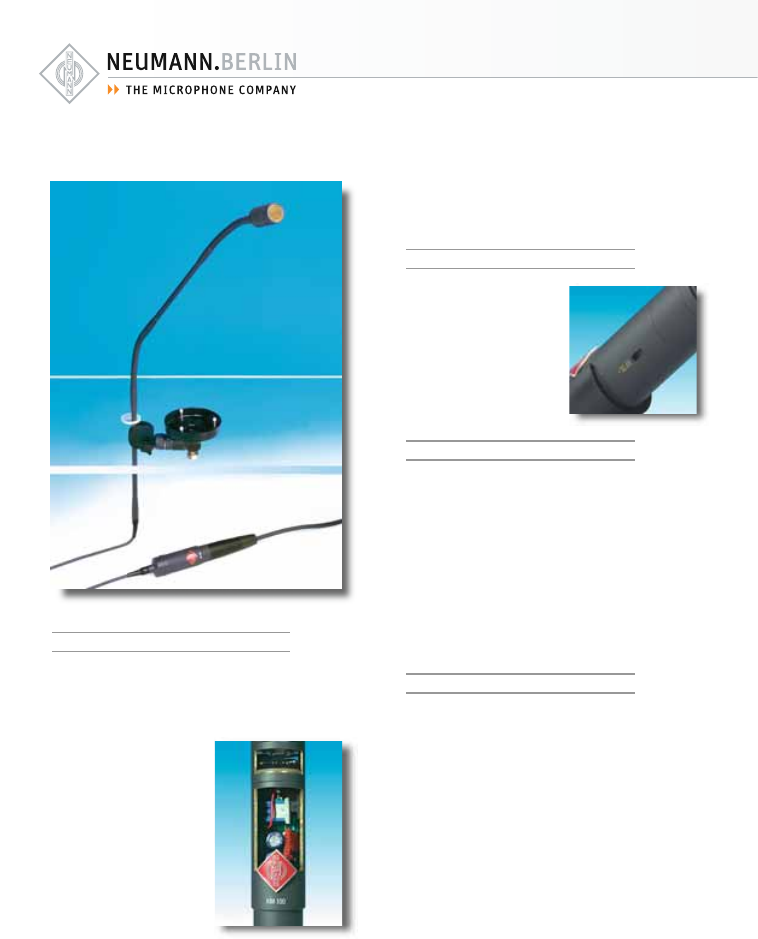
90
Even with a long cable between active capsule
and output stage, the signal is immune to exter-
nal interference.
Preattenuation
The output stage has a 10dB
switch. Attenuation is achieved
by reducing the capsule voltage
to one third.
When the switch is on, the
microphone is capable of ac-
cepting sound pressure levels
up to 150dB without being
overloaded.
Connectors
To diminish the number of connectors within
the KM 100 System some accessories were
modified. They can now be screwed directly
onto the KM 100 output stage without using
the KA 100 cable adapter. The new accesso-
ries which include the cable adapter, were re-
named adding the suffix KA. For example:
LC 3 is now LC 3 KA.
The separate KA 100 cable, needed for older
accessories, will be available also in future.
The KM 100 output stage has a 3-pin XLR
connector.
Sound diffraction sphere
The SBK130 sound diffraction sphere slips
onto the front of the KM130/KM 131 pres-
sure microphones. The diaphragm becomes an
integral part of the surface of the sphere. This
affects the frequency response of the micro-
phones.
While sounds coming from the front-half
space are emphasized by up to 2.5 dB between
2kHz and 10 kHz, sounds arriving from the
rear-half space are attenuated by a maximum
of 2.5dB in the range above 5 kHz.
Since the sound diffraction sphere causes the
pressure buildup of the KM 130/KM 131 pres-
sure microphones to begin earlier, the frequen-
cy response rises smoothly in the middle and
upper range. This is similar to a typical pres-
sure gradient microphone, where the directi-
vity increases with rising frequencies. How-
ever, since the KM130/KM 131 are pressure
microphones, they maintain a linear sensitivi-
ty down to the lowest frequencies.
Electrical features
The KM100 is phantom powered (48 V) and
uses transformerless output circuitry. This has
several advantages. It features high output capa-
bility and extremely low self noise. It provides
exceptionally clean sound, free
of any coloration. As with tra-
ditional transformers, this cir-
cuit approach ensures good
common mode rejection. The
balanced output signal is pro-
tected against interference.
The construction is extremely
compact. The entire micro-
phone circuitry is on a single hy-
brid module measuring only
2 cm² in area. It is built into the
microphone capsule, therefore
the term “active capsules”.
All sensitive components are
protected within the capsule. As a result, the
quality of the audio signal is never compromised
through the use of accessories, for example,
when the capsule is detached from the output
stage and mounted on a cable or a gooseneck.


















